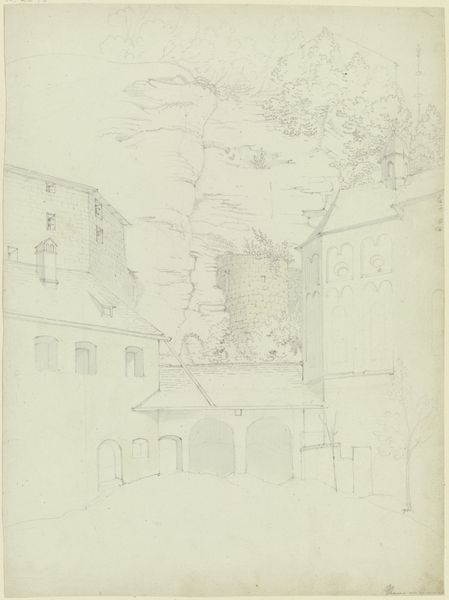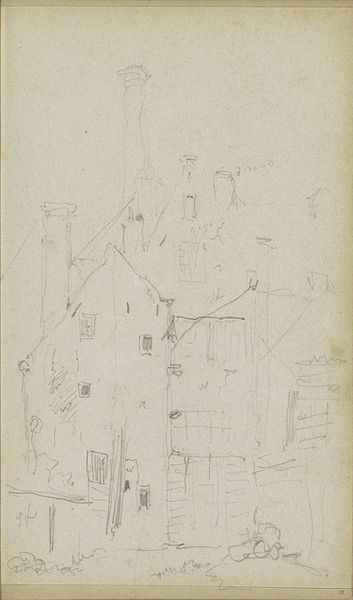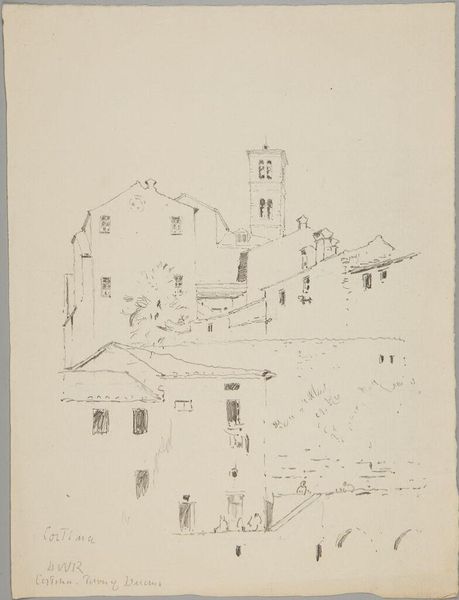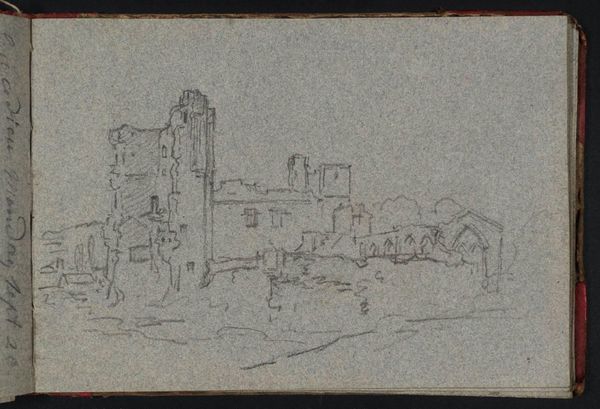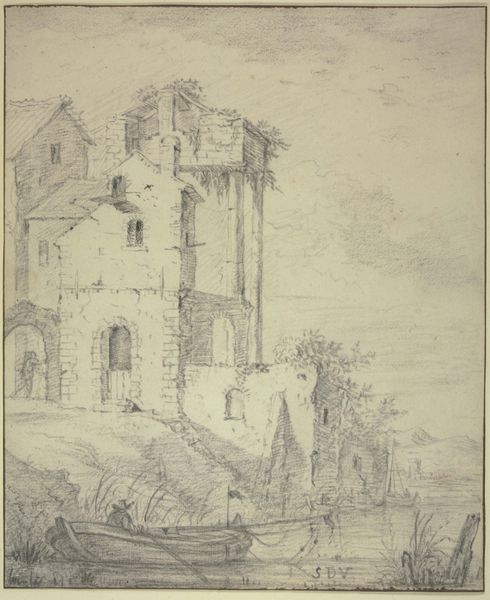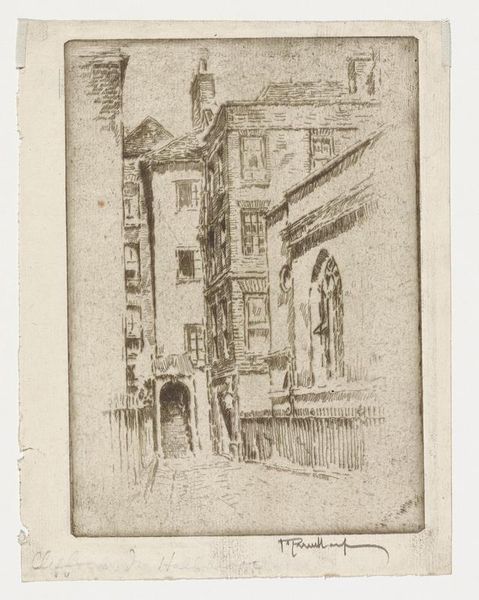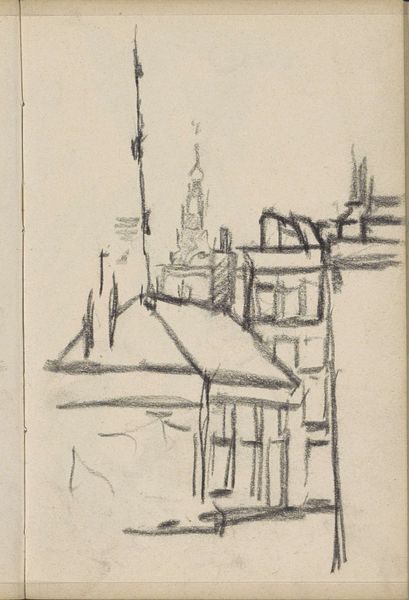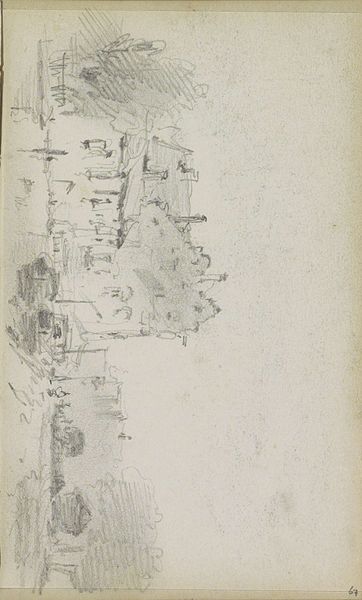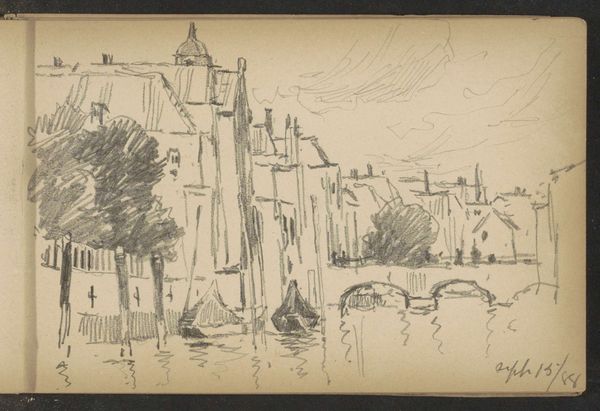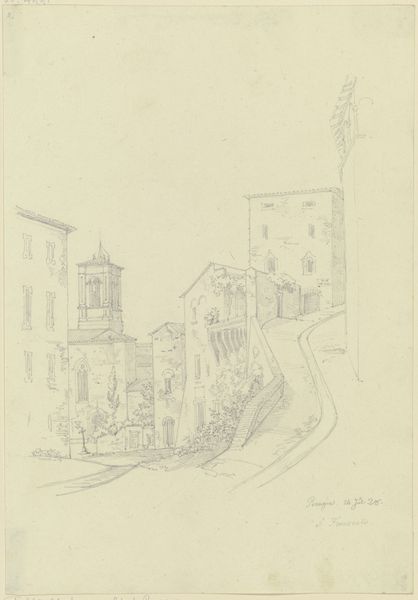
drawing, paper, pencil
#
drawing
#
landscape
#
paper
#
pencil
#
cityscape
Copyright: Rijks Museum: Open Domain
Editor: Here we have Adrianus Eversen's "Stadsgezicht met een kerk," a cityscape rendered in pencil on paper sometime between 1828 and 1897. There’s a certain starkness to it, almost bleak, with the bare tree and looming church. How do you interpret this work, especially considering its time period? Curator: The starkness you perceive is interesting. Consider the societal role of the church during that era. Beyond its spiritual function, it often represented authority, tradition, and even social control. Eversen's placement of it in the cityscape, alongside ordinary figures, begs the question: how did individuals negotiate their lives within these structures of power? Editor: That’s a perspective I hadn't fully considered. I was more focused on the artistic elements like the composition, how the tree frames the scene and draws the eye towards the church. Curator: Exactly, and the seemingly mundane detail of the tree can be a powerful symbol, can’t it? Bare, perhaps signifying winter, dormancy, or even vulnerability. How might this resonate with broader discussions about social or political oppression that people faced during this period, where visibility and transparency were often obscured? It seems to offer a commentary on the limitations placed upon the lives of ordinary people. Do you see other symbolic elements? Editor: Maybe the figures in the foreground seem quite small, dwarfed by the church and the tree, highlighting their lack of power… I find that so powerful! Curator: Indeed. Eversen seems to invite us to contemplate the tensions between individual agency and the imposing forces of societal institutions. Thanks for this insight! Editor: Thank you. It has given me a richer understanding of the work.
Comments
No comments
Be the first to comment and join the conversation on the ultimate creative platform.
